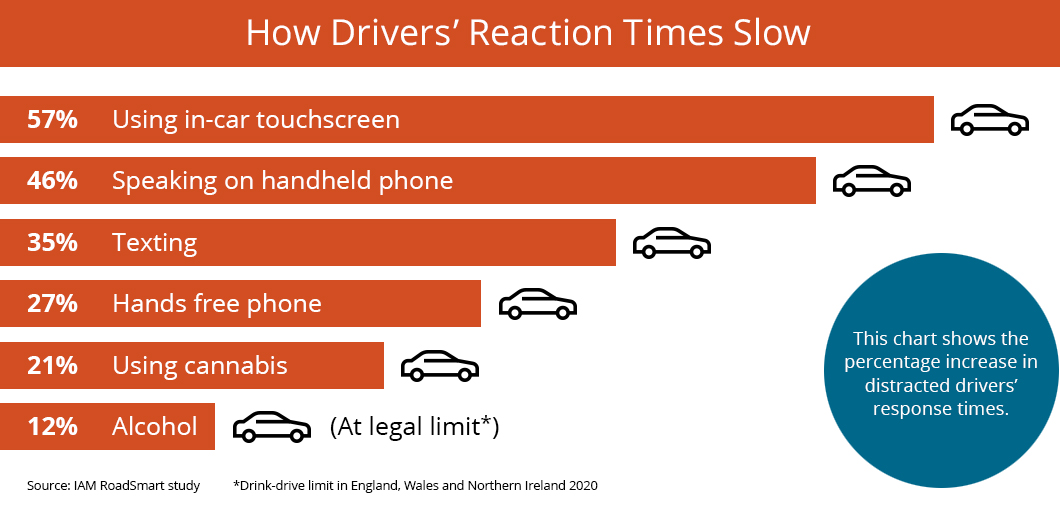In-car touchscreens more dangerous than drink or drug driving
1 October 2020
The Transport Research Laboratory (TRL) have uncovered disturbing evidence that drivers who use built-in touchscreen technology whilst driving are more distracted than if they were driving under the influence of alcohol, drugs or using a handheld phone to call or text.
Carried out on behalf of IAM RoadSmart, the study found that a driver using a touchscreen could take up to 57% longer to react to a change in the road conditions, compared to a driver who was fully focused on the road. A driver who is not distracted typically reacts in 1 second – the data below shows the increased response times for various distractions or impairments: According to Neale Kinnear, TRL’s head of behavioural science, up to 30% of road accidents are caused by driver distraction. He adds
According to Neale Kinnear, TRL’s head of behavioural science, up to 30% of road accidents are caused by driver distraction. He adds
Taking your eyes of the road for two seconds can double the risk of having a crash, yet a driver can spend up to 20 second looking at a touchscreen to perform a simple task.There is a direct comparison between the negative effect using of a mobile phone at the wheel and using a touchscreen. The driver is still taking their hands off the steering wheel, not looking at the road and removing focus from conditions around them. As with mobile phones it would be difficult to police, particularly as so many cars already on the road have a touchscreen. There is an argument that over the last decade car manufacturers have prioritised design over safety; the decluttering of the dashboard to create a minimalist interior is coming at the expense of driver and passenger welfare by moving towards touchscreen technology, even to control basic functions such as climate control. Even the super-safety-conscious Volvo has put a large and distracting touchscreen in their new XC90! Calls have been made to change to voice-controlled technology, although this would have to recognise normal speech patterns and could yet be some way off.